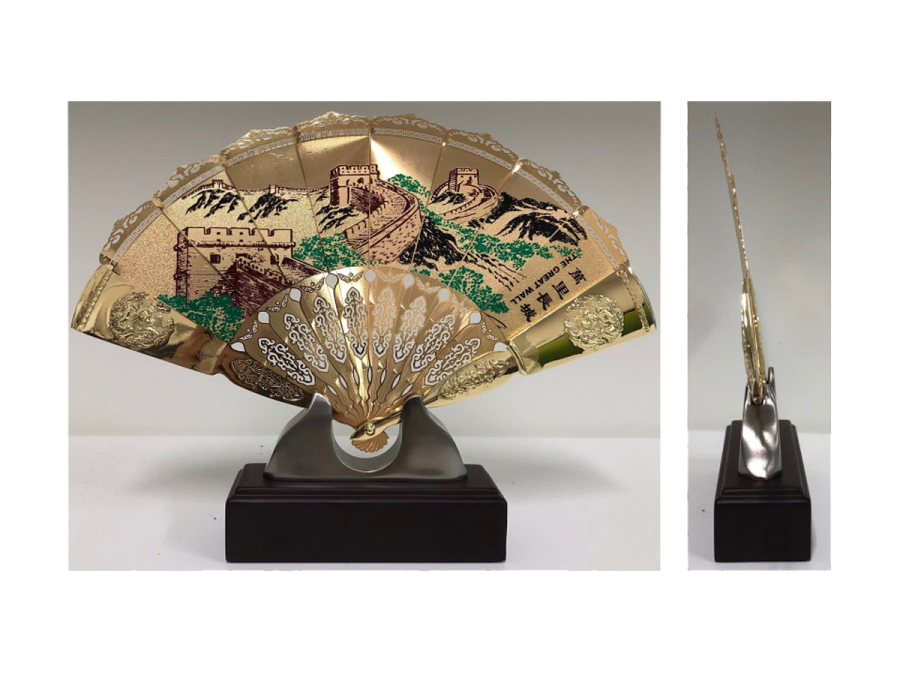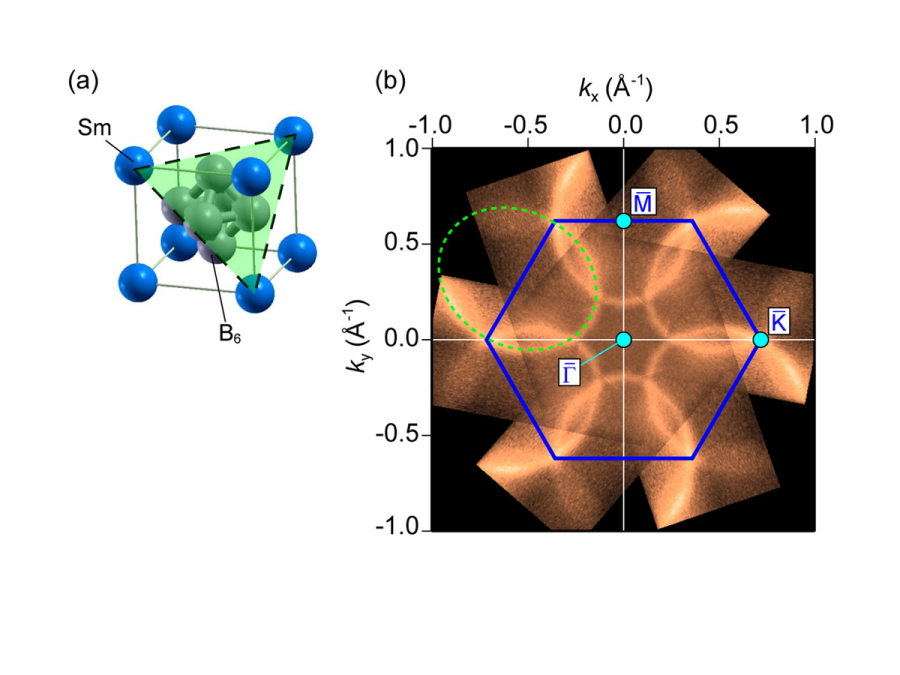Non-trivial surface states of samarium hexaboride at the (111) surface
| Journal | Nat. Commun. 10(1):2298 (2019) |
|---|---|
| Title | Non-trivial surface states of samarium hexaboride at the (111) surface |
| Laboratory | Photophysics Laboratory〈Prof. KIMURA Shin-ichi〉 |
We have obtained an important evidence for a long-standing debate about the metallic surface electronic structure of samarium hexaboride (SmB6). SmB6 is known to be an insulator only at low temperature due to the strong electron correlation effect (Kondo effect). The debate is whether the insulating phase of SmB6 is a topological insulator hosting metallic surface electronic state or not. The surface electronic structure of SmB6 obtained so far is complex and difficult to interpret. In this work, we observed the surface states from the different crystal orientation and succeeded to simplify the surface states significantly. New concert electronic phenomena driven by electron correlation and "twist (topology)" effect is expected.
Abstract
The peculiar metallic electronic states observed in the Kondo insulator, samarium hexaboride (SmB6), has stimulated considerable attention among those studying non-trivial electronic phenomena. However, experimental studies of these states have led to controversial conclusions mainly to the difficulty and inhomogeneity of the SmB6 crystal surface. In this work, the detailed electronic structure of SmB6 is revealed by angle-resolved photoelectron spectroscopy measurements of the three-fold (111) surface which is prepared for the first time and has a preferable periodic character to pursue the topological order. The metallic two-dimensional state was dispersed across the bulk Kondo gap and its helical in-plane spin polarization around the surface TRIM strongly suggests that SmB6 is topologically non-trivial. Based on these results, we propose a simple picture of the controversial topological classification of SmB6. We expect that this discovery could provide a new, fertile playground for the following researches about the concert effect between electron correlation and topology. It would also be applicable for future spintronic technologies.

Figure 1 (left) Front and (right)side vie of a fan. The available information changes drastically, depending on the view point.

Figure2 (a) Crystal structure of SmB6. A shaded area is the (111) surface studied in the current work. (b) Surface electronic structure of SmB6 obtained by angle-resolved photoelectron spectroscopy. Bright area represents the electrons with corresponding wavenumber (Fermi surface). A solid hexagon is the zone boundary determined from surface periodicity.
| Authors | Yoshiyuki Ohtsubo (1, 2), Yuki Yamashita (2), Kenta Hagiwara (2), Shin-Ichiro Ideta (3), Kiyohisa Tanaka (3), Ryu Yukawa (4), Koji Horiba (4), Hiroshi Kumigashira (4, 5), Koji Miyamoto (6), Taichi Okuda (6), Wataru Hirano (7), Fumitoshi Iga (7), Shin-Ichi Kimura (1, 2)
|
|---|---|
| PubMed | 31127112 |
